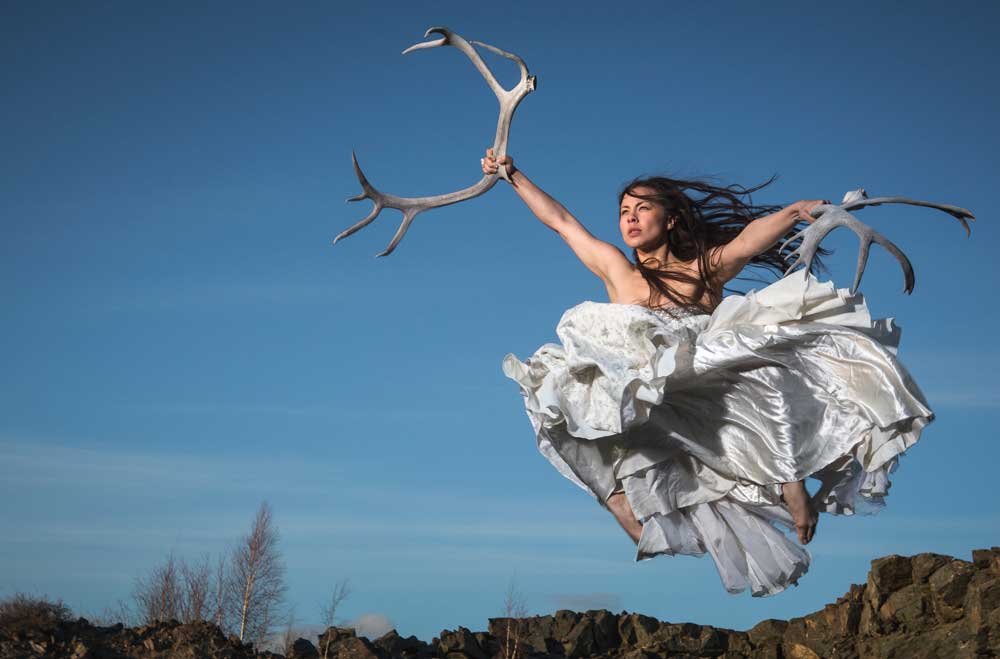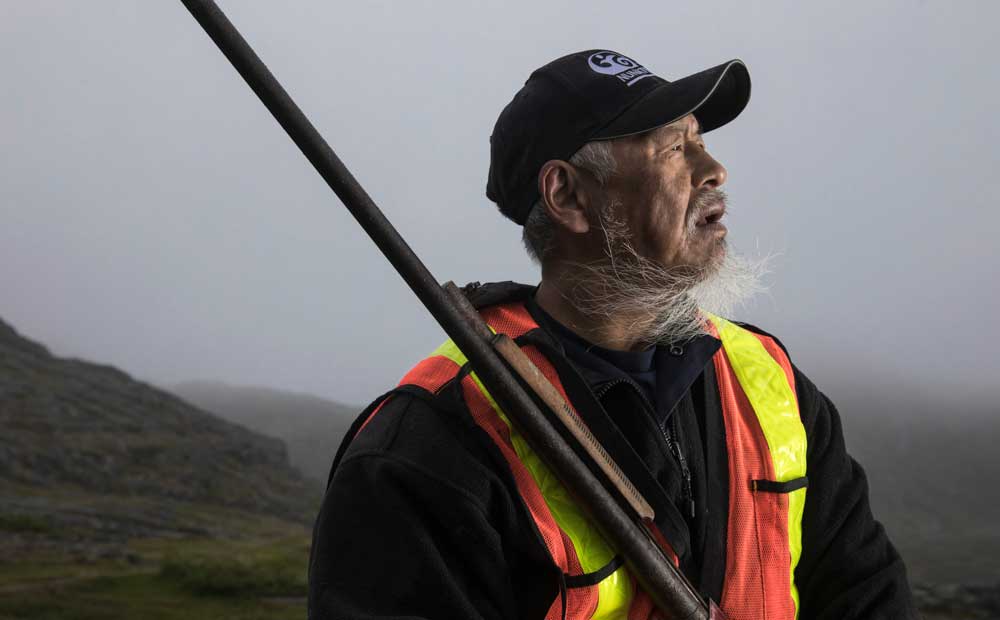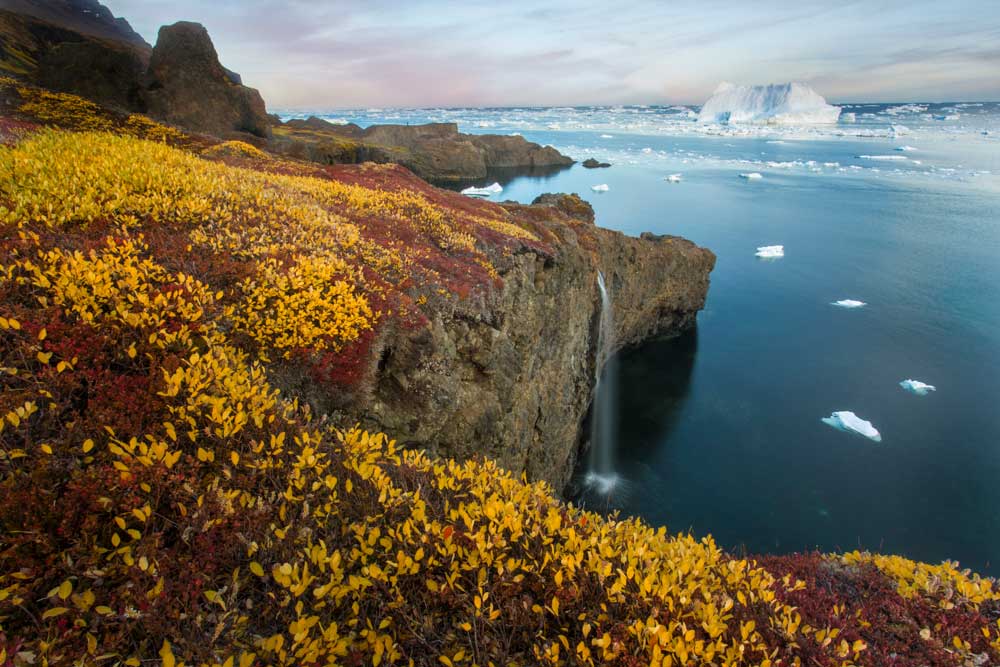Dave Brosha started out as a typical photo enthusiast while living in the Canadian High Arctic, and it was the sheer beauty of the place that inspired him to pick up a camera. Now, the photographer, writer, explorer, and educator resides with his wife, Erin, and their three young children on Prince Edward Island on Canada’s rugged East Coast, but it was the initial time in northern Canada that is responsible for his love of the planet.
“I was living in such a unique part of the planet with polar bears and icebergs and endless snow and ice,” he tells Adorama. “It really made me appreciate the beauty of the outdoor world.”

Brosha’s extraordinary images transcend genres and he describes himself as “a dreamer, a documenter, and a purveyor of beauty and light.” He is on a continual journey to seek out and capture the beauty of existence — whether it’s found in the most extreme and pristine environments, or in the beauty of humanity.
“Using time, place, and moments with others, my aim is to further an appreciation for the fact that we all live in a shared space — and that there is far greater good to be appreciated in this world than bad.”
“I’m a creative who tries to avoid labels and enjoys, first and foremost, storytelling with my photography,” he adds. “Using time, place, and moments with others, my aim is to further an appreciation for the fact that we all live in a shared space — and that there is far greater good to be appreciated in this world than bad.”


In his never-ending quest for images that achieve those lofty goals, he’s lived in Asia, spent time in many countries around the world, and traveled extensively throughout the many provinces and territories of his native Canada. Brosha is proud to be a Sigma Pro Photographer, a StrobePro professional, and a regular contributor to Photo Life Magazine and Outdoor Photography Canada.
To share his vision and techniques, and to inspire and inform other photographers, Brosha has taught photography all over Canada and around the globe. He’s appeared as an instructor and lecturer on behalf of Nikon (Dubai), One Ocean Expeditions (Antarctica), After Dark Education (St. Louis), Mystic Seminars (Portland), PPAM (Plymouth), the Globe and Mail (Toronto). Nationally, he’s been featured as a presenter at the Canadian Association For Photographic Art (CAPA) in 2015 and 2017, the Professional Photographers of Canada (PPOC) Inspired Vision Conference in 2015, and PPOC’s National Conventions in 2018. He leads photography workshops internationally, preaching creativity, authenticity, and a respect for the planet.


Dave Brosha’s top-tier publishing credits include range from CNN and Photo Life Magazine to Canadian Geographic and the Daily Telegraph, and beyond.
“I would call myself a ‘creative,’ first and foremost. My mission has always been to capture the beauty of the planet and its people.”
“I always struggle when people ask ‘what kind of photographer are you,’ because I don’t really believe in the restrictions of genres,” he says. “I believe in creativity and trying to see the world around us with an artful eye. I would call myself a ‘creative,’ first and foremost. My mission has always been to capture the beauty of the planet and its people — I guess you could say my work is a hybrid mix, primarily, of those two elements (people and place) and I just use whatever tools including light, lines, and moments around me to try to tell the most creative story of my particular subject.”


Brosha’s trajectory as a photographer is almost as singular as his images. He started out with a very basic digital point and shoot back in 2002, and then went “back” to slide film when he really got serious, returning to digital later in his career. From 2002 to 2008, he threw himself into learning as much as possible about photography and during that time he slowly developed a group of clients as he gained more experience.
“Finally, in 2008, my wife kicked me in the butt and just said ‘go for it!'” he recalls “So, decided to take a big leap of faith and give full-time photography a go, with a promise to myself, and my wife, that I’d go back to a more conventional line of work if I couldn’t make a career happen. Fortunately it took off, almost from day one, and I haven’t looked back.”


“The first year I photographed extensively I really didn’t know what I was doing or the artistic potential of photography,” he notes. “I simply knew that I liked holding a camera in my hands and the feeling that it gave me when I captured something unique. I was mostly just making snapshots at that point, but those snapshots made me feel something special. My magic moment, however, was that when, as a complete beginner, I had the opportunity to head out onto the Arctic Ocean and spend a couple days assisting and shooting alongside the legendary British polar photographer, Martin Hartley. Seeing how he didn’t just capture snapshots but told entire stories within frames… well let’s just say that inspired me beyond words. I realized looking at his photographs that photography could be art, it could be a dream profession, and it could actually change the world.”
“I realized looking at [Martin Hartley’s] photographs that photography could be art, it could be a dream profession, and it could actually change the world.”
Dave Brosha was almost entirely self-taught as his photography progressed but he’s always struggled with the notion of being self-taught. “I didn’t have any formal training,” he notes, “but I’ve learned an endless amount from reading the words and studying the photographs of some of my heroes in photography, including Joe McNally, Galen Rowell, Annie Leibovitz, Martin Hartley, and Sebastiao Salgado. Some of their individual images represent to me an entire classroom of learning if you take the time to study and appreciate them. I guess that’s been my strongest form of learning: studying images by those I admire, and trying to mentally ‘reverse-engineer’ them, asking myself ‘how the heck did they possibly do that?’, which is usually followed by ‘I want to do that.’ It’s an incredible educational motivator.”


But when it comes to categorizing his photography, Brosha pushes back because he sees himself as a box filled with every imaginable genre.
“I got my serious start in photography in a small town of about 20,000 people (Yellowknife, Northwest Territories) and it wasn’t a large enough place to really specialize,” he adds. “This was fine by me, however, as I’ve always been interested in all genres of photography and I spend my time almost equally doing landscape, portraiture, commercial, astrophotography, and editorial. My passion though, if I was forced to list just one, is something I call environmental creative portraiture—trying to marry people and place together in unique and impactful ways.”
What’s in Dave Brosha’s camera bag?
Since he’s a creative who works at a very high level and in many genres Brosha’s kit consists of an impressive array of top quality gear.
“Equipment is not something I obsess over,” he observes, “but using the best equipment is important because it allows my creativity to shine. I have a large mix of Strobepro and Godox (Flashpoint) lighting equipment that I often take into the field with me (I love its portability), and as a Sigma Pro Photographer I use an extensive range of Sigma Art and Sigma Sport lenses, all of which I absolutely love. I use a tripod (Manfrotto) quite often in my outdoor work as I love mixing in elements of longer exposures into many of my creative compositions. And you’ll never catch me without a good headlamp, which is essential for all the night/astro work I do.”
“Some of the lenses that you’ll never see me without include the Sigma 50mm f/1.4 Art, truly an incredible portrait lens that also brings out my artistic side when I’m photographing wide-open nature scenes,” he says. “The Sigma 14-24mm f/2.8 Art has become my go-to lens in the landscape realm, and really is a ‘best of all worlds’ when it comes to its focal-range, build quality, and wide constant aperture. It’s an excellent lens for wide-angle compositions and a superb astro lens… but I also find myself making environmental portraits with it as well! Finally, as I travel yearly to some of the world’s greatest bastions of wildlife, Africa and Antarctica, the Sigma 150-600mm f/5-6.3 Sport is my lens of choice for capturing a diverse range of animals and it’s built-in OS optical stabilization gives me the freedom to capture razor sharp pictures handheld even at super-telephoto focal lengths. All these lenses deliver fantastic image quality and find regular use in a wide variety of shooting projects.”


Where does Brosha find his style and inspiration?
“It’s always tough when you’re a multi-genre photographer who loves a vast array of subjects to pinpoint a distinct style, but when I look across my body of work I definitely see distinct trends: I am not drawn to light, airy, or happy-feeling images,” he remembers. “I am definitely drawn to darkness and shadow and the beauty contained within the absence of light, if that makes sense. I guess my driving force in each and every shoot is to try to search for what is unique in a scene, or with a personality. I’m not looking to shoot within a recipe or a cookie-cutter style that I’ve preconceived, but rather to create a new style with each shoot. It’s a process of exploration, and that’s what drives me and my body of work — to push myself to shoot differently today than I did yesterday; to push my eye and my comfort level and my creativity to new places. I don’t always succeed in this quest by any means, but I love the challenge of it all — and it makes me artistically satisfied even to make the attempt.”
“Photography, to me, is a deeply personal artistic tool to enact emotions in others — to wake people up to the importance of this shared space we live in — and that humans all around us and on the other side of the world… are all important.”
Brosha describes his general approach to his art as “heartfelt,” and he expresses this view with his signature passion, “I care deeply about what I do and the subjects that give their time to me. I feel like I owe them to photograph as passionately and fully as I can, and to give as much or more of me in the artistic process as they gift to me. I feel the same way when I’m photographing alone in nature: photography is a privilege and I feel very fortunate for the opportunities I’ve had to make a career out of it. I want to treat nature with respect and really try to capture images that scream from the rooftops just how beautiful this planet is and why we should all give a damn about it. Photography, to me, is a deeply personal artistic tool to enact emotions in others — to wake people up to the importance of this shared space we live in — and that humans all around us and on the other side of the world… are all important.”


But for Brosha’s evolving work, there is no conclusion to this ongoing process of transformation.
“I find my interest in photography actually shifts several times a year,” he notes. “I tend to take three or four themes every year and work those themes — sometimes concurrently, sometimes consecutively — until my brain and creative soul needs a shift. I’ve been on this pattern for several years now and can foresee following it for a number of years to come. I work on what I’m passionate about at a given time and place, but am not afraid to shift my work on a dime if something else strikes me at a particular time in my life.” In short, Dave Brosha is a consummate photographic artist on a lifelong voyage of discovery so it is hardly surprising that he is always seeking and creating something new and compelling.”
Diving deeper into Brosha’s portfolio:

“I am heavily influenced by the late, great Galen Rowell in the landscape realm, and one thing that I always appreciated about his body of work was he wasn’t afraid to show the relationship of humanity in the natural world,” he recalls. “That’s always stuck with me: when I head into nature, it’s often a religious experience for me. I feel small in this vast, beautiful planet but rather than feeling ‘small’ with negative connotations, rather, it’s the opposite for me. I feel in awe by the world around me — I feel respect. Through my images I hope to convey some of these feelings: the awe and the mystery of nature and that we can co-exist with it and respect it.”

“This man — Roch — is the real deal,” Brosha notes of the photo above. “Just a character that lives a very traditional, off-the-grid lifestyle. With many portrait subjects you spend a great deal of time finding the perfect environment in which to capture their personality: with him all I needed was simply and beautifully…him. He had presence and power and soul. A portrait photographer’s dream!”

“Daniel ‘Danny Boy’ Stephens was one of the more interesting subjects I’ve photographed,” he adds. “He’s an indigenous Mi’kmaq from Canada’s East Coast, but he at one time was a sniper in the U.S. Marines. This was photographed at about 5AM — I had a vision of strength and peace in the morning light — and this probably has become the image I’m best known for in my entire career.”

“Although I’ve photographed hundreds of self-portraits in my landscape compositions, pretty much all of them have been anonymous — often silhouettes,” Brosha says. “So this image was a huge leap for me, mentally. I’m putting myself out there, and have never presented myself in this light before. But it’s probably one of the images I’m most proud of, as it represents, to me, many things: transformation, bravery, and life’s journeys.”

“Dougie was a bit of a trendsetter on the traditional powwow circuit: he was one of the first dancers to really incorporate modern elements into his traditional regalia,” he says. “He’s definitely a showman, and a presence — one of the most thoughtful and stoic and kind subjects I’ve ever photographed.”
If you want to see more of Brosha’s work, check out his website davebrosha.com, following him on Facebook.com/davebroshaphotography, or on Instagram @davebrosha.






